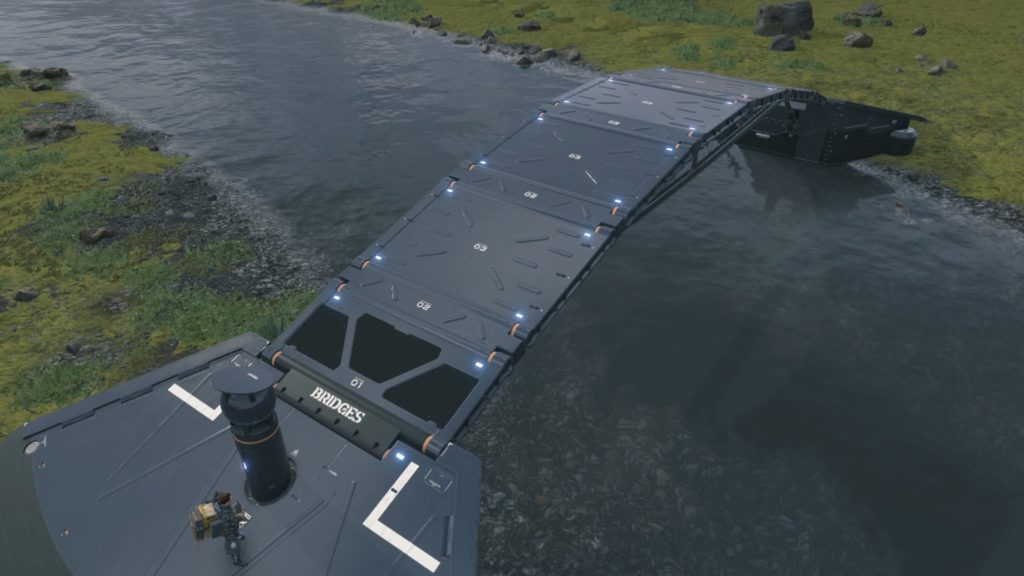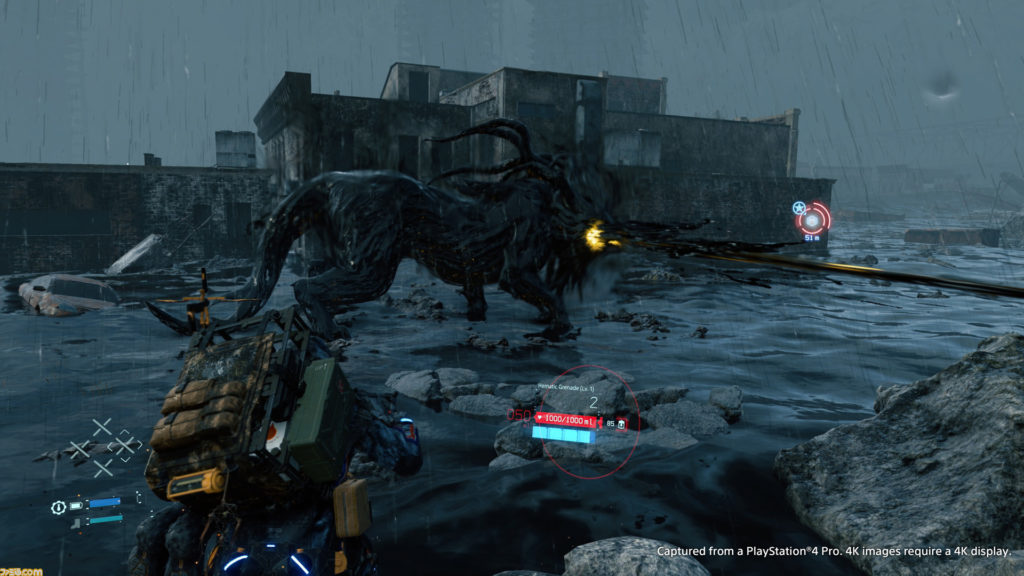There was this side-quest in Death Stranding where I was asked to deliver a fucking pizza to a guy in the other side of the map. The pizza needed to be in horizontal position through all the trip, but the path was full of rivers, rocky terrain, hills, and even a massive cliff. It seemed like a task I would need to do on foot, pushing the pizza on top of a flying cart, but it would take perhaps an hour of arduous traveling, avoiding ghost monsters and terrorists. I was not up for that.
At that moment I decided to invest some time and resources to upgrade the game’s roads, picking up a truck and carrying heavy metals and ceramics to around half a dozen outposts. After delivering the damn pizza quite easily by taking a truck and bee-lining through the paved roads, I noticed a lot of messages popping in the lower left of my screen telling me that someone used a road I’ve helped rebuild. That’s when Death Stranding finally clicked for me. Up to that point, I was in for the crazy story and the beautiful vistas, but those messages made me understand. The game was urging me to not simply make my way through the map, but leave the path easier for those who would need it later.

That is the essence of Death Stranding as Kojima mentioned multiple times in his interviews. You see, the game does offer guns, vehicles, monsters, and human enemies, but heck, they are just accessories. The real deal of Death Stranding is carving a path through the wilderness and leaving your traces for others to follow. It is an experience I never had in gaming because it is way different than directly interacting with other people. The only feedback you get in this game is a tiny message and “likes”, but heck, it feels really rewarding. Why is that? Well, because of the effort you put in it while also getting this same help from others.
Fast forward a few hours in my game. I had another side-quest where I had to pick up cargo at the bottom of a massive waterfall. I was given the introduction about the zip-line structures of the game, but haven’t really understood how I was supposed to use them in that exact quest. So I went towards the waterfall, built a zip-line that seemed useless for the sake of tutorial and made my way down to pick the goods. The problems is that half the goods were at the other side of the river, which was deep and too large to cross. So I made all my way back up, followed the river upstream and found a way to cross it. After that I would return to the waterfall and make my way down again, picking the rest of the cargo. That was a lot of effort, but then I see my first zip-line all the way up in the other side and… hell, after creating another at the opposite bank I could instantly make my way back. Not only that, I had just laid out a much easier and painless path for other players. That zip-line on the other side of the river had hundreds of likes after a few hours. Yeah, people were using it.
I cannot stress how weird it feels to play Death Stranding. The game is basically a massive trip through dangerous terrain, but there is such depth and strategy tied to each trip you make that this simple exploration aspect ends up being one of the most thoughtful experiences I had.

Every move I make needs to be calculated. I need to check the path for rivers, mountains, rough terrain, and crevasses. It helps if I take a look at the weather forecast to see if it will rain (remember, the rain in this game degrades equipment fairly quickly). There are territories dominated by terrorists which I need to avoid. The ghost-monsters (BTs) can also really slow down or completely block a path, so I better get knowledge about where they can be found. Finally, there is the matter of cargo to deal with. I could simply put everything in my backpack, use a power skeleton to carry heavier cargo, use a speed skeleton to traverse fields quickly, or perhaps use a flying cart, a motorcycle, or some truck. There is a lot to think before starting every single delivery. Of course, making that trip is also rewarding.
After prepping stuff, you may notice some structures laid out in the map. Some of those are placed by NPCs and are integral part of the world, but most of those are built by other players and can be upgraded by anyone, including you. It is great to see that helpful rainfall shelter in the distance after you were forced out of your path by unexpected BTs, or a big bridge crossing to the other side of a large crevasse. If you use them, the player who built that will know, and if you leave “likes” it will benefit him even more. You know that because you too are rewarded when your structures help other players in their journeys.
Anyway. There are still ways to go until the end of Death Stranding, but having put around thirty hours into it, these small experiences and the simple joy of traversing the terrain with strategy and planning makes this a game that I never thought was capable of existing and entertaining me.
Oh, the background story is also weirdly exciting, pushing me to go through it after every long cutscene, after all, this is a Kojima’s game. I’ll dig more into that when I write my review of the game in the future.
